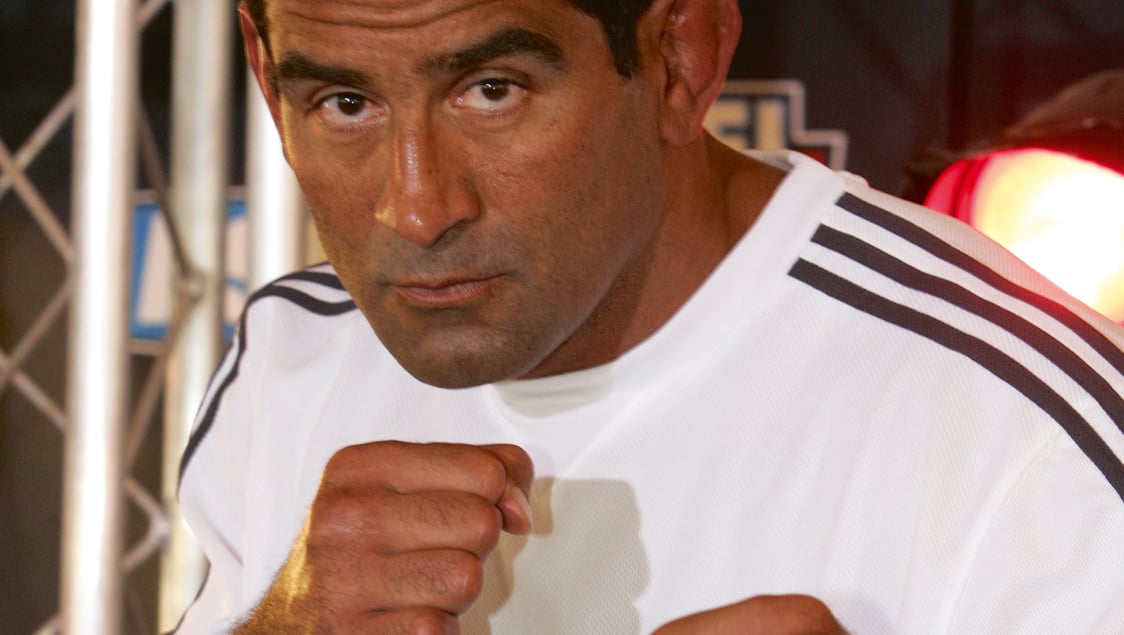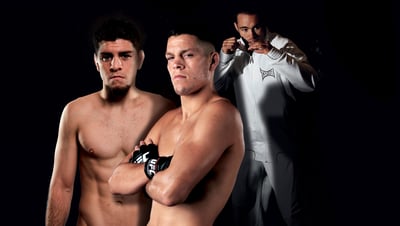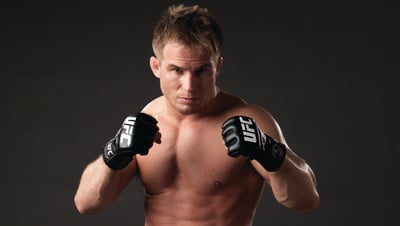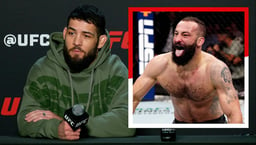
Issue 066
September 2010
The first-ever renaissance fighter – able to strike, grapple and submit with equally ruthless efficiency
It’s 1995. Ken Shamrock is warming up to fight Dan Severn in the fledgling Ultimate Fighting Championship’s first-ever superfight at UFC 6. Shortly before the fight begins, the producers run an interview with a man introduced as ‘The King of the Streets’, a Brazilian named Marco Ruas who’ll make his North American debut on the next event.
Here was a new breed of fighter. Sure, he was Latin American, and indeed he’d fought on the streets. But this guy wasn’t skinny like his countryman Royce Gracie. Ruas was large, ripped and possessed the thick, cabled arms and huge hands of a trawlerman. This was someone who’d replaced time in a gi with time in the gym. He was also an expert in vale tudo, the form of no-holds-barred fighting that predated modern MMA.
At UFC 7: The Brawl in Buffalo Ruas ended up decimating three opponents. After surgically removing kickboxer Larry Cureton in the first round with a heel hook, Ruas faced Remco Pardoel, by then a veteran of the UFC and considered one of the most dangerous competitors due to his grappling pedigree. In a back-and-forth fight they exchanged submission attempts and strikes. After 12 sweaty and brutal minutes, Ruas obtained the mount and Remco tapped out, supposedly because of exhaustion, but most likely due to a simple sense of self-preservation.
The King of the Streets faced Paul Varelans, a behemoth, later that night in the final round of the tournament. Varelans had made quite an impact at the UFC thanks to his mean looks and formidable 6’8” frame. Ruas, having beaten both of his earlier opponents that night via submission, showed his varied skill set by chopping Varelans down with a succession of brutal Muay Thai leg kicks. Varelans could stand no more and crumpled, allowing Ruas to pounce for the TKO victory.
Ruas had shown that he could strike, wrestle and submit: a combination that was still lacking in most fighters at that time. He had an eponymous fighting style known as Ruas Vale Tudo (that would go on to inspire future UFC contenders Pedro Rizzo and Renato Sobral), but the origins of Ruas’ oeuvre lay in his native Brazil.
He started with judo at 13 in an academy managed by his father. The gym also offered taekwondo, capoeira, boxing and other martial arts, so the inclination to cross-train came naturally to him at a time when most martial artists stuck rigidly to one discipline.
Ruas would become involved in the legendary Brazilian jiu-jitsu vs luta livre battles of the ‘80s and early ‘90s but, unlike the now-famous fighters and coaches who fought on the beaches of Rio, Ruas actively trained in each style, something that was heavily frowned upon in both camps. He trained Brazilian jiu-jitsu with legend Oswaldo Alves and luta livre with Hugo Duarte, a nemesis of the Gracie family. Both wanted him to fight under their flag, but he refused to take sides.
“I only wanted to be tougher,” Ruas said. That didn’t stop him from representing himself though, and he built a reputation as a resilient fighter. He even claims the Gracies were afraid of him: “They wanted to fight unknown fighters... they took them to the ground and they won. When they felt the guy was hard to beat and he knew grappling, they avoided him.”
At UFC: Ultimate Ultimate 1995, Ruas choked out hot prospect Keith Hackney (a man known as ‘The Giant Killer’) in just two minutes, but he lost his next fight to future legend Oleg Taktarov by judges’ decision. He returned to Brazil and made three appearances at the brutal, bare-knuckle tournament World Vale Tudo Championships (WVC). He took out UFC 3 champ Steve Jennum in under two minutes in their first event and again took Taktarov to a decision at their second. On WVC 4, he heel hooked UFC bad boy Patrick Smith in just 44 seconds.
In 1998 The King of the Streets beat a path to Japan and fought twice in the legendary Pride FC. By the time Ruas was 37 years old, knee problems proved to be his undoing as his career came to a close. He withdrew midway through two bouts, simply unable to fight on: “I couldn’t continue, and my last fight against Maurice Smith, my corner throw in the towel.” Incapable of recreating the performances that
made him famous, he now good humoredly describes himself as an “old guy”.
Ruas continues to teach his patented Ruas Vale Tudo system from his gym in California. At 49 years of age we won’t see Ruas in the ring again. But the well-rounded skills, athleticism and match-winning low kicks he pioneered in the early days of MMA will be seen for a long time
to come.
CAREER SNAPSHOT
1984
Fights Fernando Pinduka, a Gracie jiu-jitsu fighter, to an epic 20-minute draw
1995
UFC 7 – Ruas beats three fighters in one night to become the tournament champion
1996
Fights twice at WVC in Brazil, one win, one draw (against Oleg Taktarov)
1998
Heel hooks Gary Goodridge at Pride 2 in Japan
1999
Loses to Maurice Smith at UFC 21 due to a knee injury
2001
Protégé Pedro Rizzo challenges Randy Couture for the UFC heavyweight title
2007
After six years out of the ring, returns to face Maurice Smith and suffers a similar knee injury
...









